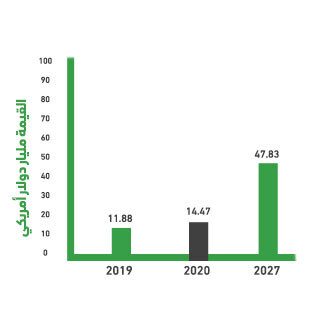The wedding dress rental project is a unique investment opportunity that meets the needs of brides on their big day, offering an exceptional collection of dresses that combine modern elegance with unique designs to suit all tastes. The project also offers rental services for accessories that complement the bride’s look, such as lace-embellished veils, luxurious crowns, jewelry, elegant bracelets, scarves, and handbags, making it an ideal destination for every bride. The project will offer flexible rental options for its clients, and given its prime location, its dresses keeping pace with the latest fashion trends, and its competitive prices, the project will be a popular choice among girls and women.

A wedding dress rental project is a unique investment opportunity that meets the needs of brides in obtaining luxurious dresses that are up to date with the latest fashion trends, along with a set of integrated accessories such as tiaras, veils, jewelry, scarves, bags, and shoes. Mashroo3k Consulting provides a comprehensive feasibility study for the wedding dress rental project according to the highest international standards adopted in this field. The company relies on an accurate and comprehensive methodology that ensures that all aspects necessary for the success of the project are covered, utilizing a wide database covering all Middle Eastern markets, which helps in anticipating future market trends. Thanks to its team of experts and specialized consultants, Mashroo3k guarantees to provide integrated solutions that contribute to the sustainable success of this project. In addition, the company offers its clients the opportunity to collaborate with suppliers in more than 22 countries to supply the project owners with all the necessary items from international fashion houses at unbeatable prices, making it an ideal partner for anyone wishing to invest in this project.



Variety and quality of exhibits.
Satisfactory prices for brides.
Dynamic location.
Availability of all types of accessories.
Acceptance of the latest fashion trends.
Executive summary
Study project services/products
Market Size Analysis
Risk Assessment
Technical study
Financial study
Organizational and administrative study

Service sector in GCC countries
According to the macroeconomic theory of sectors, the economy is divided into three main and large sectors: the first; – is the sector that is based on collecting raw materials and includes mining companies, timber companies, oil exploration companies, in addition to agricultural and fishing industries. The second sector; is the sector that depends on goods and their sale, such as: (car manufacturing, furniture, clothing trade… etc.). As for the third sector, known as the “services” sector; it is the sector responsible for providing and producing services, essentially relying on intangible things, such as: entertainment, health care, transportation, hospitality, restaurants, etc. This theory believes that the more advanced countries are, the more their economies are based on the third sector, unlike primitive countries, which rely mostly on the first sector (the United States of America, for example, the service sector constitutes 85% of its economy).
Kingdom of Saudi Arabia:
The State of Qatar:
Kuwait:
United Arab Emirates:
Sultanate of Oman:
Global Service Sector
The service sector is the major contributor to the world’s gross product; It alone accounts for more than three fifths of this output. The sector does not rely on the production of tangible goods such as automobile and furniture, but rather on the provision of intangible services such as banking, medical care, transportation, hospitality, leisure, etc. The value of the sector market was estimated in 2020 at USD 10,814.49 billion and rose to USD 11,780.11 billion in 2021. The market achieved a CAGR of 8.9%. After recovering from the effects of the coronavirus pandemic, global market experts expect the sector’s market to reach US $ 15683.84 billion by 2025, bringing the market to a CAGR of 7% in the coming years.

Mashroo3k Consulting recommends investing in the services industry, as its contribution to the global GDP increased from 62.8% in 2010 to 65.7% in 2020. According to World Bank data, the contribution of this industry to the global GDP is expected to rise to 69.6% by 2030.